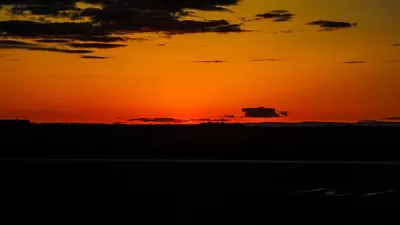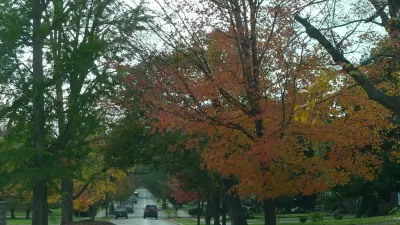As summer temperatures rise and heat waves roll through, cities can take steps to keep cool. But shedding the heat may be difficult for urban areas designed to retain it.

Most cities weren't designed with a warming climate in mind. If anything, the aim has been to keep residents warm. Madeline Ostrander writes about how the coming years will force this paradigm to shift. From the piece: "[Georgia Tech professor Brian] Stone had analyzed five decades of temperature data from fifty cities around the United States. He found that the majority were getting hotter than the rural areas around them, and the change was most profound in Louisville—an increase of about 1.7 degrees every decade since 1960."
A big part of the problem, unsurprisingly, comes down to all those heat-absorbing black asphalt roads. "The city had quietly become the country's worst example of what meteorologists call the urban heat-island effect, in which dark, paved surfaces absorb solar radiation, raising the temperature of the air around them."
Researchers found that Louisville was losing a full fifty-four thousand trees a year, both a result of changing climate and an exacerbating factor for heat. "How many lives could be spared, the researchers then asked, if the city planted more trees and grass, replaced dark asphalt and concrete with light-colored and reflective roofs and pavement, and cut back on the excess heat seeping out of buildings and the tailpipes of cars and buses?"
Whether cities can take the heat has major implications for public health. "The European heat wave of 2003, for instance, took at least thirty-five thousand lives, a disaster intensified both by global warming and, according to Stone, the heat-trapping design of cities. [A recent study] estimated that if global temperatures rise unabated and the city's population continues to grow, New York could lose more than three thousand lives every year from heat by 2080 (compared with about six hundred in 2006)."
FULL STORY: As Our Cities Grow Hotter, How Will We Adapt?

Coming Soon to Ohio: The Largest Agrivoltaic Farm in the US
The ambitious 6,000-acre project will combine an 800-watt solar farm with crop and livestock production.

Pennsylvania Mall Conversion Bill Passes House
If passed, the bill would promote the adaptive reuse of defunct commercial buildings.

U.S. Supreme Court: California's Impact Fees May Violate Takings Clause
A California property owner took El Dorado County to state court after paying a traffic impact fee he felt was exorbitant. He lost in trial court, appellate court, and the California Supreme Court denied review. Then the U.S. Supreme Court acted.

Colorado Bill Would Tie Transportation Funding to TOD
The proposed law would require cities to meet certain housing targets near transit or risk losing access to a key state highway fund.

Dallas Surburb Bans New Airbnbs
Plano’s city council banned all new permits for short-term rentals as concerns about their impacts on housing costs grow.

Divvy Introduces E-Bike Charging Docks
New, circular docks let e-bikes charge at stations, eliminating the need for frequent battery swaps.
City of Costa Mesa
Licking County
Barrett Planning Group LLC
HUD's Office of Policy Development and Research
Mpact Transit + Community
HUD's Office of Policy Development and Research
Tufts University, Department of Urban and Environmental Policy & Planning
City of Universal City TX
ULI Northwest Arkansas
Urban Design for Planners 1: Software Tools
This six-course series explores essential urban design concepts using open source software and equips planners with the tools they need to participate fully in the urban design process.
Planning for Universal Design
Learn the tools for implementing Universal Design in planning regulations.


























